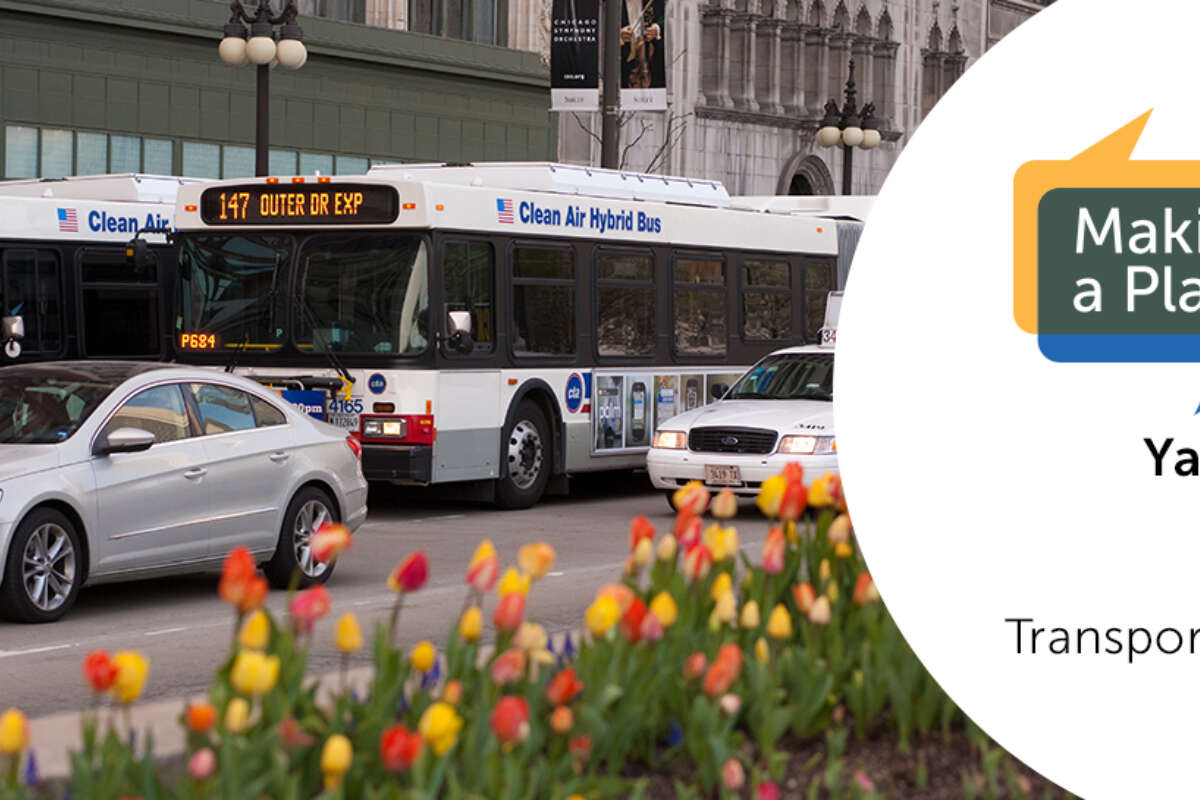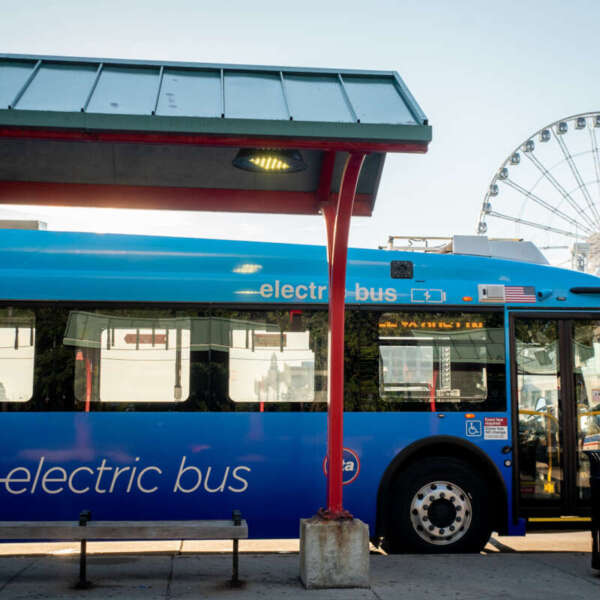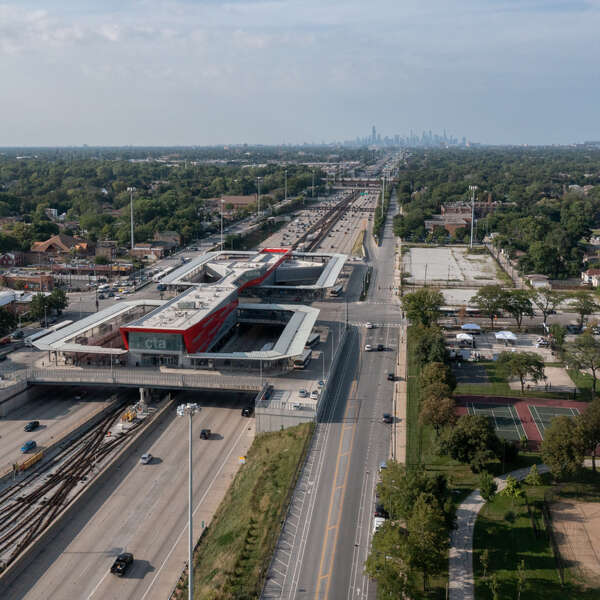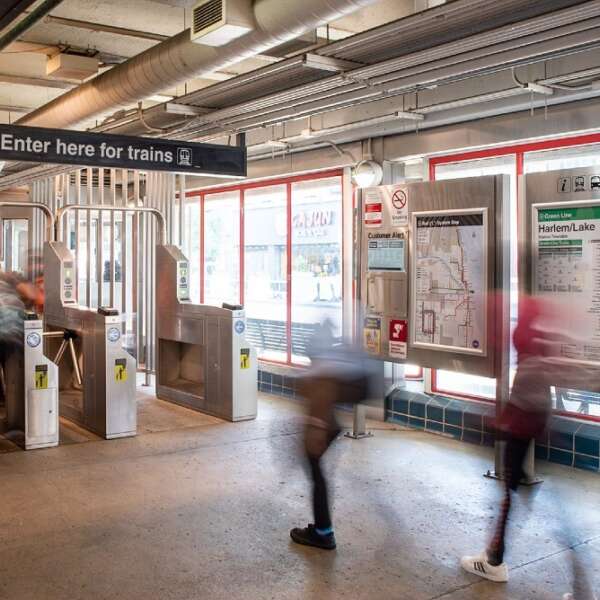Guest blogger from Via Transportation weighs in how tech innovation can help create ‘Public Transit 2.0’
October 19, 2021
October 19, 2021

 The RTA is currently developing the 2023 Regional Transit Strategic Plan for Northeastern Illinois at a time when the challenges and opportunities facing our region’s transit system have never been greater. Making a Plan represents our effort to engage and collaborate with close stakeholders and the public. We have invited a group of transit users and thinkers to answer a set of questions for an occasional guest series on Connections, the RTA blog. The views represented in this series are not those of the RTA, but they are views we want to hear and have heard. If you have thoughts about this post, the strategic plan, or would like to participate by contributing a guest blog post, please email communications@rtchicago.org and subscribe to our newsletter to learn more.
The RTA is currently developing the 2023 Regional Transit Strategic Plan for Northeastern Illinois at a time when the challenges and opportunities facing our region’s transit system have never been greater. Making a Plan represents our effort to engage and collaborate with close stakeholders and the public. We have invited a group of transit users and thinkers to answer a set of questions for an occasional guest series on Connections, the RTA blog. The views represented in this series are not those of the RTA, but they are views we want to hear and have heard. If you have thoughts about this post, the strategic plan, or would like to participate by contributing a guest blog post, please email communications@rtchicago.org and subscribe to our newsletter to learn more.
Name: Ya-Ting Liu
Organization or Affiliation: Via Transportation
Role/Responsibilities: Director of Government Affairs & Policy
Favorite transit mode or station? Chicago L - Merchandise Mart station
Why are you passionate about transit? Transportation sits squarely at the intersection of our country’s most urgent crises: climate change, equity, and economic recovery. If we are to tackle all three challenges head on, then investing in public transit is mission critical. Public transit is the lifeblood of communities. When the world stopped moving due to the pandemic, frontline workers did not have the luxury of working from home. They overwhelmingly relied on public transit to take them to their work that kept communities fed, hospitals clean, and essential services running.
A report by Transit Center found that of the 7.6 million U.S. workers who use transit to get to and from work, 2.8 million of them work in essential industries (e.g. hospitals, doctor’s offices, care facilities, grocery stories, pharmacies, etc.) The continued investment, expansion, and modernization of public transit infrastructure is key to keeping businesses and workers moving. Public transit’s success is also key to curbing greenhouse gas emissions and traffic congestion which has already rebounded at alarming rates in most metropolitan regions across the country.
What do you see as the greatest challenges and opportunities for the Chicago region’s transit system over the next ten years? What is the biggest barrier to realizing these opportunities?
Necessity is the mother of invention and in the wake of the pandemic, we have seen transit agencies embrace new ways to attract riders back to the system. From fare discounts and promotions to on-demand microtransit deployments, transit agencies are starting to effectively innovate with flexible approaches to service delivery. Metra’s “All Day Pass,” CTA’s “More Fun, Less Fare'' pass, and the rollout of contactless payments by CTA and Pace are all great examples of transit agencies using technology to reduce friction in the user experience. The biggest barrier to date has been funding, but new federal legislation (if passed) will create a huge new set of opportunities. The public transit industry is looking at potentially the single largest federal investment in transit in the country’s history through the bipartisan infrastructure bill, which will also create additional competitive federal USDOT grants for projects that reduce congestion and carbon emissions, improve access and equity, and enhance system performance.
Looking ahead, what future force of change has the greatest potential to transform or disrupt our region’s transit system?
Transportation is changing fast. Via believes the key to a more sustainable, equitable, and resilient future is public transit 2.0: a tech-enabled transit system that offers a frictionless experience for customers every step of the way. Today’s public transit providers have to operate in an environment that requires greater flexibility and adaptability to changing travel needs, use cases, and policy goals. For example, at the height of the pandemic, Via’s public partners were able to repurpose or adjust their on-demand transit services for emergency food delivery and essential worker transportation at a moment’s notice.
From rural counties to large cities, public transportation providers are turning to transit technology to help plan, operate, and continually improve their networks and services. Today, Via is working with over 500 partners in 40 countries to plan and deliver next-generation transit in their communities. The strategic planning process currently underway by the RTA is incredibly exciting and comes at an opportune time when important strategic policy and funding decisions are happening about the future of transit at every level of government.
What models of successful transit funding can we look to for guidance as we seek to make our funding streams more sustainable?
There’s much to be hopeful for from the federal transportation bill for public transit. . There is also more state and local elected officials can do to secure additional transit funding. The Chicago Metropolitan Agency for Planning (CMAP) has done a lot of terrific analysis on the region’s anticipated transportation revenue shortfalls and needs into 2050. Their diagnosis and proposed menu of new sources of revenue is a story that can be heard across the country, state by state.
Relying solely on gas taxes is no longer tenable and more states, including Illinois, should consider user fees (e.g. tolling, congestion pricing, parking fees) and other financing mechanisms like value capture to harness a portion of the new private property value created by public infrastructure. The key to getting these ideas past “the valley of political death” is to be clear about how dollars from new revenue sources will be spent. In general, there needs to be greater transparency and a set of performance-based criteria for how transportation funding gets allocated and projected evaluated at every level of government.
What can we learn from efforts to advance equity in other public spheres and apply to transit to make a tangible difference?
Today, the zip code you are born into continues to be one of the strongest predictors of your economic mobility. Disadvantaged communities face barriers not only in education, but in health outcomes and job attainment that generations of American policies and practices have perpetuated. Access to each of these opportunity areas can be enabled or barred based on mobility.
There is no path forward toward a just and sustainable recovery without a renewed commitment to public transit 2.0 - a vision of American mobility and innovation that is not tied to personal car ownership. Owning a car - the second highest household expense after housing itself -- should not be a requirement to access opportunity regardless of where you live. Transit agencies, municipalities, and community transportation providers have proven they can keep essential workers moving and innovate to expand access to those most in need when given the funding to do so. We now have a once-in-a-generation opportunity to prioritize these efforts to connect all people where they need to go, efficiently and sustainably.
Regional mobility impacts everyone but is competing for attention among many worthy public policy issues. What in your experience has been the most successful way to engage people about transit issues?
Transit, like other public goods, is something people take for granted and don’t spend much time thinking about until something goes wrong. It’s also hard for people to wrap their minds around who is in charge of what. There are day-to-day operational decisions and then there are more complicated policy and funding decisions that involve different jurisdictions and levels of government. I think the most successful public engagement efforts focus on ways to build and amplify public awareness around policies that impact transit funding and services. For example, in New York City, to build support for congestion pricing, it was important to explain that the Governor, not the Mayor, was in charge of policy and funding decisions that directly impacted the quality of New York City’s transit system.
It’s also important to engage with communities in a way that is easier for members of the public to understand and provide feedback on transit projects and proposals. Transportation planning software can help users understand existing conditions and gain insights. These tools can help bring stakeholders together to communicate complicated, technical concepts and build consensus faster.
Subscribe to our Newsletter
Related Articles
 With equity at the forefront, CTA, Metra, and Pace open new facilities, prioritize upgrades in south and west communities
With equity at the forefront, CTA, Metra, and Pace open new facilities, prioritize upgrades in south and west communities
This year, CTA and Pace have opened or advanced various new facilities in south and west communities throughout the region, and Metra has prioritized upgrade...
October 9, 2024 New project management oversight report highlights more than 100 projects representing $8.2 billion in capital investments
New project management oversight report highlights more than 100 projects representing $8.2 billion in capital investments
The RTA’s Project Management Oversight (PMO) program ensures that the Service Boards—CTA, Metra, and Pace—are spending capital funds and managing their infra...
June 27, 2024 Transportation Tuesday recap: Improving and expanding the transit system strategically
Transportation Tuesday recap: Improving and expanding the transit system strategically
With last year’s adoption of Transit is the Answer came 15 new evaluation metrics that comprise a strategy for evaluating and selecting capital projects. Now...
May 30, 2024 Transit is the answer to meeting Illinois’ climate goals
Transit is the answer to meeting Illinois’ climate goals
As we celebrate Earth Day 2024, the RTA is announcing Transforming Transit —the agency’s commitment to lead the Chicago region’s transit system into the futu...
April 18, 2024 Three years into the Infrastructure Investment and Jobs Act, Chicago’s transit system is winning competitive grants and advancing critical projects
Three years into the Infrastructure Investment and Jobs Act, Chicago’s transit system is winning competitive grants and advancing critical projects
The Infrastructure Investment and Jobs Act (IIJA), passed in 2021, represented a historic level of federal investment for shoring up the nation’s infrastruct...
March 12, 2024 Why fully funding paratransit service and reduced fare programs is key to closing the transit budget gap
Why fully funding paratransit service and reduced fare programs is key to closing the transit budget gap
With transit facing a fiscal cliff in the coming years, fully funding critical programs like ADA paratransit service and free and reduced fare programs is on...
February 29, 2024